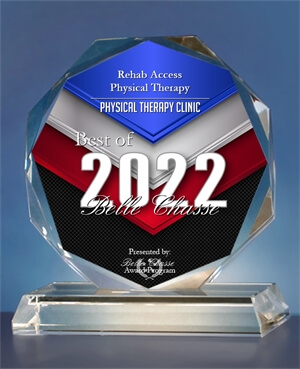Have you recently suffered from an ankle or knee sprain? One day you are active and able to walk/run with ease and the next, you’re experiencing incredible pain emanating from your knee or ankle. After a thorough examination, you are diagnosed with an ankle or knee sprain. The question now is, how do you recover?
What is a Sprain?
Every joint in the body has bands of tissue that hold the joint together. These bands are called ligaments. When the ligaments turn outside of their normal range of motion, causing them to overstretch or tear, the injury is called a sprain. In ankles, the ligaments on the outside of the joint are the most likely to be injured. In knees, any of the ligaments can be injured because the knee rotates in several different ways.
The Three Phases of Recovery
Every ankle sprain or knee sprain has three phases of recovery. While healing takes between two weeks and two months, there is no magic formula for making the process go faster. However, systematically moving through these phases allows the joint to heal properly and reduces the likelihood of re-injuring the joint.
Phase 1: RICE
The first phase of joint recovery can be described with the acronym RICE – Rest, Ice, Compression, Elevation. This phase can last from a few days, up to a week in order to give the ankle or knee a chance to begin healing.
- Rest your knee or ankle by not walking or running on it, using crutches if necessary.
- Ice the knee or ankle for 20 minutes at a time to keep inflammation at a minimum. However, you should never put ice directly on the skin. Instead, wrap an ice pack in a thin cloth or pillowcase to prevent frostbite.
- Compression can be achieved by using a brace or wrap on the injury. Not only does compression add support to a weakened joint, it reduces swelling as well.
- Elevating the knee or ankle above the waist or the heart also reduces swelling in the joint. Prop it up on pillows, the arm of the couch, or another supportive, soft surface.
Phase 2: Increase Flexibility & Range of Motion
Once the swelling has begun to subside, you are ready to enter the next phase of recovery – increasing flexibility and range of motion in the joint. At this point, enlisting the help of a physical therapist can help restore strength and balance to your knee or ankle while decreasing the likelihood of re-injuring it in the process. A physical therapist can perform cross friction massage that ensures the ligaments will not improperly adhere to the bone. PT at this stage also involves several hands-on therapies that continue to control swelling and manage pain without the use of large doses of pain medications.
Phase 3: Restore Strength & Balance
Once the joint has begun to heal, a physical therapist can then prescribe strengthening exercises that will help restore your range of motion, strength, balance, and proprioception (the ability to sense where the joint is in space). Many people assume that once they are no longer in pain, they can go back to normal activities. In reality, physical therapy is the only way a person can achieve a full recovery from a knee or ankle sprain. A carefully constructed, supervised exercise program not only on helps to strengthen the ligaments holding the joint together, it also strengthens the muscles around the joint, preventing future injuries.
When done correctly, with physical therapy, recovering from a knee or ankle sprain can leave you as good as new in a few short weeks.
Always consult your physical therapist or physician before starting exercises you are unsure of doing.
http://www.aofas.org/footcaremd/how-to/foot-injury/Pages/How%20to%20Care%20for%20a%20Sprained%20Ankle.aspx



